Giraffes, boomerangs, the Mary Rose and untimely deaths of two French kings – inside the world of real tennis
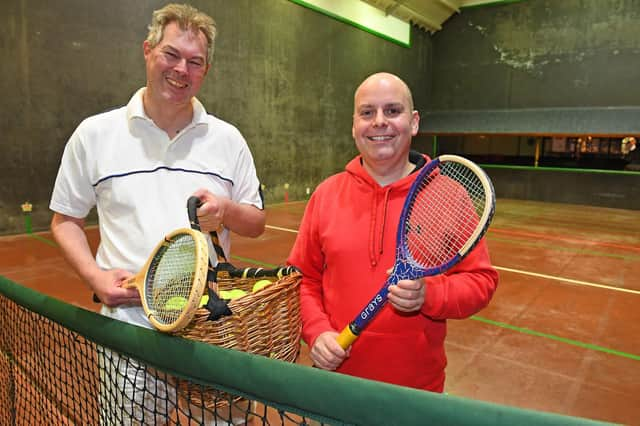

The playing area features penthouse roofs, tambours, grilles and dedans.
Setting chases are a big part of the game, while on Hayling Island competitors try to ring a bell or hit a painting of the Mary Rose ship to win points.
Advertisement
Hide AdAdvertisement
Hide Ad‘Celebrity’ players include Henry VIII, a former King of Sweden, and the current Duke of Wessex, Prince Edward.
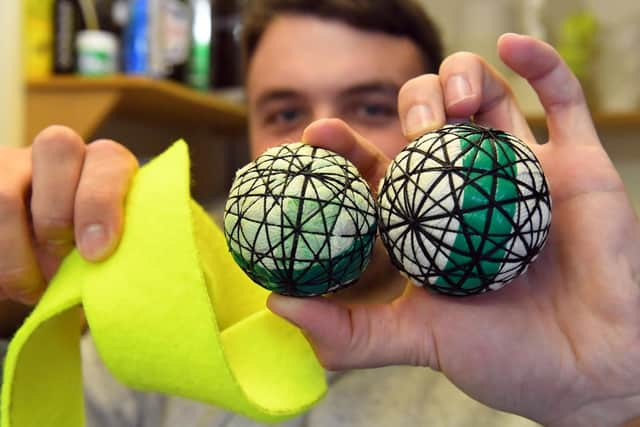

The reigning men’s world champion has held the crown almost non-stop since the mid 1990s, while his wife has taken part in 36 British, French, Australian and French Opens since 2010 and won 31 of them. Rob and Claire Fahey, therefore, are world sport’s most successful ever husband and wife team, and if you don’t like this sport you have probably never heard of them.
Welcome to the world of real tennis. And welcome to Seacourt, where the ‘Sport of Kings’ – even though it was involved in the death of two of them – has been played since 1911.
That is a fact worth celebrating, because Seacourt is one of only 24 venues in the whole of the United Kingdom where the sport can be played.
Advertisement
Hide AdAdvertisement
Hide AdIndeed, there are only 22 others in the entire world – in USA (11), France (6), Australia (4) and Canada (1). So while there is one real tennis venue for every 30 million Americans, there is the same for the thousands of Hayling residents.
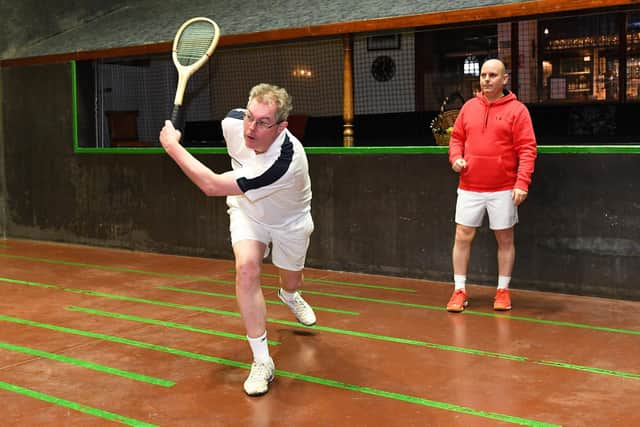

The Island is very fortunate, therefore, and Andrew Lyons is one man who certainly knows it. The 47-year-old is the head real tennis professional at Seacourt, a role he has only held for three months. Prior to that, he had spent over 20 years working at a far more famous rackets club – Queen’s in London.
Lyons is a ‘local’, though, hailing from Horndean. His association with the sport, and with Seacourt, started in the late 80s when he first picked up a racket on Hayling. All these years on, he has been ranked as high as No 7 in the world and has marked every World Championship final since 2004 at venues like the royal palace of Fontainebleau in France, Rhode Island in the USA and Melbourne.
That is some honour – the equivalent of refereeing the last eight World Cup football finals, or umpiring the last eight Wimbledon singles finals. And in real tennis, there is one major difference – there is only one marker. Lyons has officiated the best with no help from a linesman, or Hawk-eye technology.
Advertisement
Hide AdAdvertisement
Hide AdIn fact, there’s another major difference to a football referee’s life; Lyons doesn’t have his parentage questioned by thousands of supporters every time he takes charge of a major game.
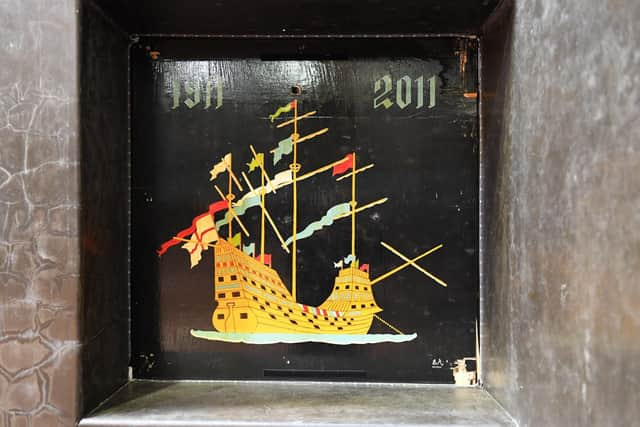

A little background info for you: during my college and university days of the late 80s, I loved tennis – the Andy Murray version, not the Henry VIII one. I used to play for hours. For most of my working life I’ve been a sports journalist, and have written features about croquet, karting and even pigeon racing (it’s not a sport, I know, but try telling that to the men – always men! – involved), but I had never typed a single word about real tennis. That had to change, and I’m glad it has.
Before stepping onto the court, I wondered if my tennis background would be a help or a hindrance. On first glace, real tennis appears a cocktail of lawn tennis (similar-sized floor, similar-sized balls, a net in the middle) and squash (hard floors, hard walls, and you can hit the ball off the latter). I haven’t played squash since Maggie Thatcher was in No 10.
The reasons I loved playing tennis were many – you needed to be physically fit, you had to possess a good knowledge of tactics, a wide range of shots, you could be subtle or you could be savage, and you couldn’t rely on anyone else. You were running and thinking all of the time. Well, the same applies to real tennis.
There’s just more rules to learn.
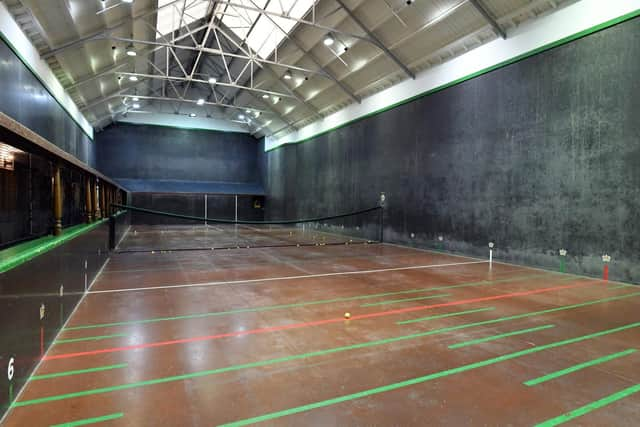

Advertisement
Hide AdAdvertisement
Hide AdTo start with, you have to serve onto the penthouse roof – the area to one side of the court under which are window-like openings divided into several sections called ‘galleries’. You can score points by hitting the ball into these – and if you ring the ball at Seacourt in the ‘winning gallery’ then, as the name suggests, you’ve hit a winning point.
That bit is easy to understand, but generally the rules of real tennis take longer to learn than lawn tennis or squash.
For example, winning points can also be scored by hitting the dedan (an area behind the server) or the grille (in Seacourt’s case this is the painting of the Mary Rose) in the top right hand corner of the hazard (non-serving) side
Unlike lawn tennis, the serve is always delivered from the service side and the ball has to bounce at least once on the hazard side of the penthouse roof and then on the floor within the service court. There are numerous types of serve – including all those words I mentioned in the very first sentence.
Advertisement
Hide AdAdvertisement
Hide AdIf a ball bounces twice anywhere else on the court or enters any other gallery before a player touches it, a chase is set.This is where, to the casual observer, it gets a tad complicated.
Right, deep breath ...
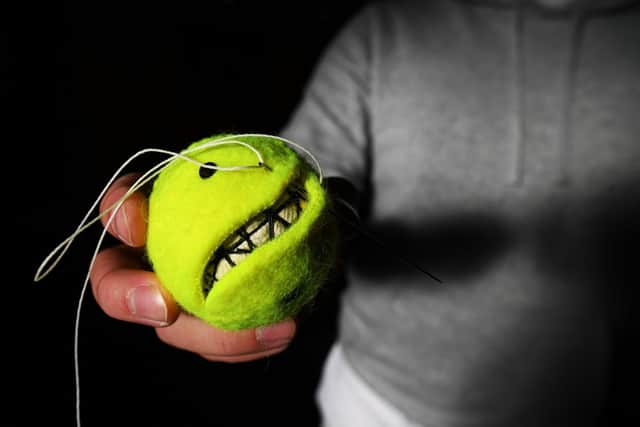

The lines on the floor are there to measure the length of the chase from the back wall. For example, if the second bounce was on the five-yard line, then ‘chase 5’ has been set.
Chases can occur at the hazard end, but only if the second bounce is closer to the net than the service line. These are called ‘hazard chases’
Players change ends where there are two chases, or if there is one outstanding chase and the score is at game point.
Advertisement
Hide AdAdvertisement
Hide AdImmediately after changing ends, the chase – or chases – are ‘played off’. This means the receiving player must hit their shorts so that the second bounce is closer to the back wall than the chase being played.
Got all that? I’m not convinced I have, and I’ve just spent an hour on court playing the sport!
Real tennis is like tennis, but it’s not; it’s like squash, but it’s also not.
I enjoyed the fact you can hit your shots against the walls, but beware the major differences – the penthouse roof and the tambour. The latter is devilish – an angular wall which can totally change the direction of a shot. The former is also interesting in that Lyons, when marking a game, stands underneath the penthouse roof and level with the net.
Advertisement
Hide AdAdvertisement
Hide AdThat means, unlike in virtually any sport you care to name, there are times when the official in charge can’t see the ball (at every serve, for a start) but the players can.
One of the first tips Lyons gave me was to remember that the ball doesn’t come onto the racket like it does in tennis; at times, certainly on a clay surface, you can wait for it to bounce up. No, in real tennis it skids along, it hits the stone floor and keeps lower than a tennis ball ever will.
Bear in mind that a real tennis racket is smaller than a lawn tennis one – and it’s shaped differently, too; the oval shape helps make it easier to strike balls close to the floor – and you have the ingredients for a novice to miss-hit a large percentage of their shots.
I did just that – spectacularly so on occasions.
Struggling to adapt to the ball – cork-based, wrapped in tape with a felt exterior not dissimilar to a tennis ball – skidding towards my ankles every time Lyons sliced it back over the net, it took me a while to get the hang of a sport that is certainly fascinating, regularly intriguing, slightly confusing, sometimes frustrating, and left me keen to have another go.
Advertisement
Hide AdAdvertisement
Hide AdI found out that swinging your racket through the line of the ball, a la lawn tennis, is a poor tactic; slicing is key, to keep the ball low, to make it skid, to make it hit the walls and land second bounce as close to the back wall as possible.
Rob Fahey is good at slicing. He has to be, as the Australian first won the World title in 1994. Played every two years, he held onto his crown until finally being beaten in 2016. Like the champion he undoubtedly is, though, he won it back last year at the ripe age of 49. His wife, Claire, is the greatest female player the world has ever seen.
You wouldn’t want to play them at mixed doubles, it’s fair to say.
Historically, real tennis is one of the oldest sports in the world – a variation on it was around in 12th century France and it first attracted the attention of English royalty in the early 1400s.
Advertisement
Hide AdAdvertisement
Hide AdIt is also the only sport to contribute to the death of two French kings.
First, King Louis X (a cantankerous monarch given the sobriquet ‘the Quarreller’) died in 1316 after a particularly exhausting match at Vincennes.
He was just 26 when he quarrelled for the last time.
Charles VIII (nicknamed ‘the Affable’) lived only a little longer; taking the throne when he was just 13, he died aged 27 in 1498 after banging his head on the lintel of a door while on his way to watch a game of real tennis.
To sum up, I would like to place on record my thanks to Andrew Lyons for giving up an hour of his life to watch me either top edge, bottom edge or just completely miss a variety of shots.
Advertisement
Hide AdAdvertisement
Hide AdIt is not often you get to experience a sport through the eyes of someone who was once No 7 in the world, and who is rated as the best marker (referee) on the planet.
Hayling Island, therefore, is lucky to have a man like Andrew, and very lucky to possess a real tennis court.
Chances are it will never be a mainstream sport – far too quirky, though such eccentricity is to be applauded – but clubs like Seacourt are to be congratulated for keeping the flag flying for 108 years.
May they metaphorically fly it for many more.